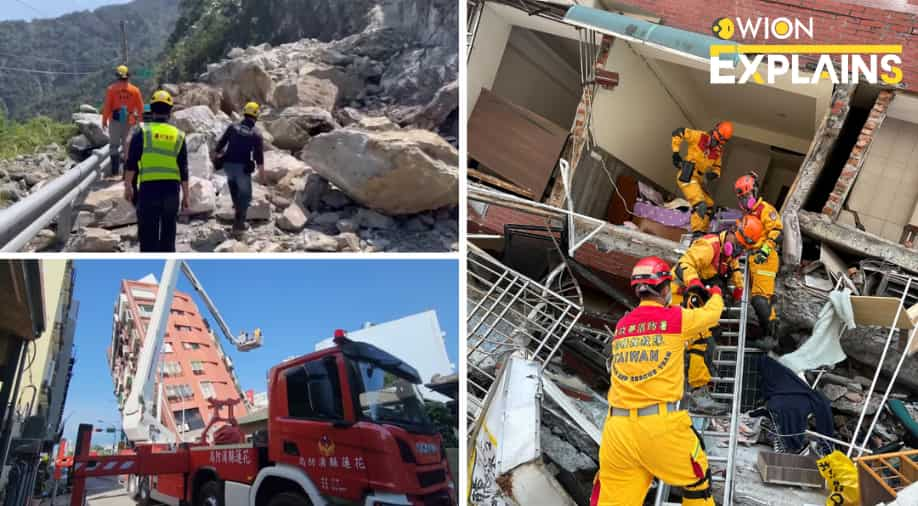Impact of Wednesday’s Earthquake
The earthquake on Wednesday struck at 8:00 am (local time) just offshore the sparsely populated Taiwanese county of Hualien, as people were leaving for work and children were headed to school.
- At least nine people were killed and around 1,038 others were injured.
- The earthquake triggered a tsunami warning for southern Japan and the Philippines, which was later lifted.
- Approximately 24 landslides occurred, power lines were downed, and some buildings were severely damaged.
- 35 roads, bridges, and tunnels were damaged, and train services were briefly halted.
Response and Preparedness in Taiwan
Taiwan’s geographical location along the Pacific “Ring of Fire” makes it prone to frequent earthquakes due to the interaction of tectonic plates.
- Taiwan has developed advanced earthquake preparedness measures over the years.
- The government passed the Disaster Prevention and Protection Act and established national centers for coordination and training.
- Strict building codes, a seismological network, and public education campaigns on earthquake safety have been implemented.
Technological Advancements in Disaster Response
Taiwan’s technology and policies have helped mitigate the impact of earthquakes and improve disaster response.
- The disaster response system in Taiwan scans keywords and photos online to deploy resources quickly.
- More than 300,000 households lost power after the recent quake, but electricity was restored to the majority in less than two hours.
Continued Efforts in Disaster Management
Taiwan continues to enhance its disaster response system with advancements in technology.
- Wu Yih-min, a professor at National Taiwan University, highlighted the ongoing development of disaster response technologies.
- The government uses data collected from various sources to assess damage, track people, and deploy resources efficiently.
Earthquake Causes and Vulnerability
The frequent earthquakes in Taiwan are attributed to its location along the Pacific “Ring of Fire” and the interaction of tectonic plates.
- Around 90% of the world’s earthquakes occur along the Ring of Fire, which is also home to numerous volcanoes.
- The tension between the Philippine Sea Plate and the Eurasian Plate leads to sudden releases in the form of earthquakes.
Historical Context and Impact
Past earthquakes in Taiwan have led to improvements in emergency response and disaster reduction.
- The devastating earthquake in 1999 prompted officials to enhance coordination and training for earthquakes.
- Observers criticized the initial response, leading to the implementation of stricter measures and training programs.















































